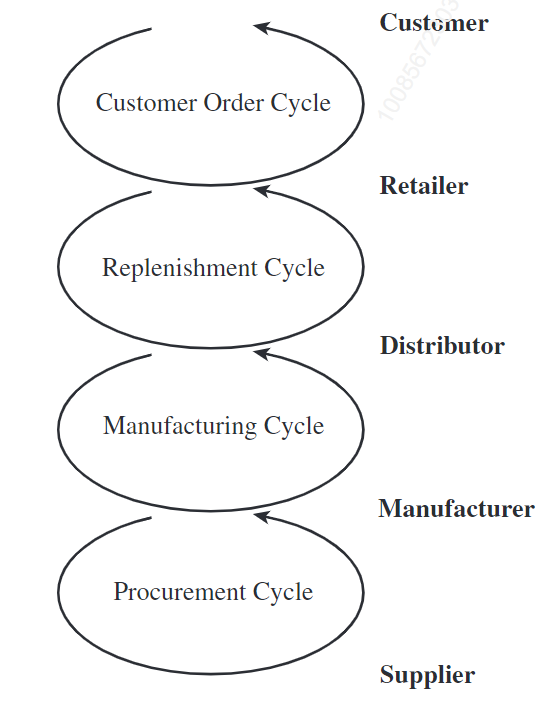First it is important to have clear concepts of supply chain and SCM. Supply chain consists on the interaction of all parties involved in fulfilling a customer request, while supply chain management (SCM) refers to the coordination and management of activities involved in the production and delivery of products and services to fulfill customers’ needs. The objective of a supply chain is to obtain a high profitability, which will show how successful a supply chain is. The higher the customer value (assets) and the lower the supply chain cost, the better the supply chain is, this is why it is so important to correctly manage it.
There is a huge importance on making good decisions in a supply chain because it determines the way it will work because it determines the way in which work will be done to achieve a product or service and its respective delivery to the client. SCM is in charge of making these decisions and the author defines three phases.
DECISION PHASES IN SUPPLY CHAIN
- Supply chain strategy or design
Corresponding to the strategic part of the decisions, since the long-term structure and ways of working are established, defining processes and policies for several years. - Supply chain planning
Corresponding to the tactical part of the decisions, in this phase the definition of: which markets will be supplied, from which locations, the subcontracting of manufacturing, the inventory policies to be followed and the timing and size of the marketing and price promotions are made. - Supply chain operation
Corresponding to the operational part of the decisions, this focuses on working in the short term with activities like the allocation of inventory to individual orders, set of dates when an order needs to be filled, generating picklist at the warehouse, setting delivery schedules for trucks, etc.
PROCESS VIEWS OF A SUPPLY CHAIN
As mentioned before, a supply chain is a sequence of flows and processes given by the interaction of stakeholders, and these processes can be understood from two points of view the cycle view and the pull/push view.
The cycle view in a supply chain depends on the interaction of all actors in the process. These cycles are:
- Customer order cycle
- Replenishment cycle
- Manufacturing cycle
- Procurement cycle
However not every supply chain has the four cycles occurring one after the other, sometimes they occur simultaneously or simply do not occur.
The pull/push view refers on how the supply chain operates depending on the demand of the end customer. In a push view the production process starts before the demand and ensures to have an offer available when the consumer requires it, on the other hand, the pull view occurs when the consumer requests a product or service and from that moment the production process begins to meet the customer’s need.
Chopra, Sunil, (2019), SUPPLY CHAIN MANAGEMENT 7ED. Madrid, España: Pearson Global Editions. Obtenido de https://www.ingebook.com/ib/NPcd/IB_BooksVis?cod_primaria=1000193&codigo_libro=
